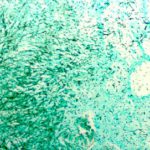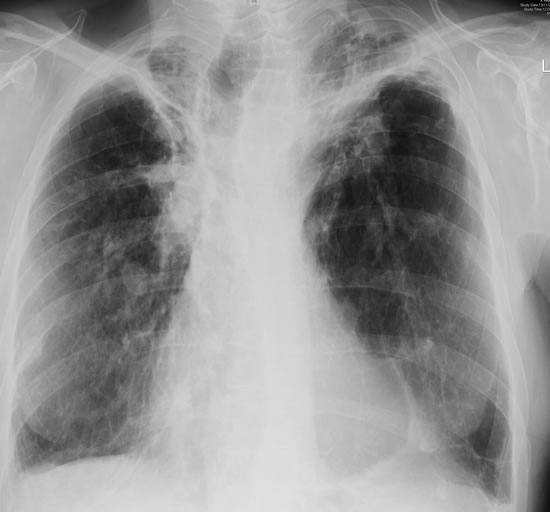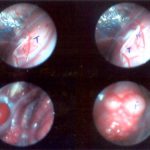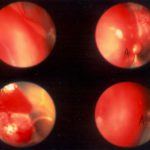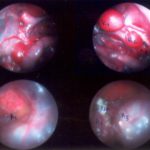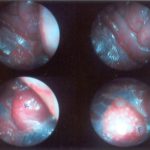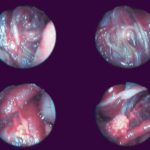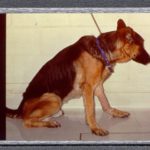Date: 26 November 2013
Born 75 years ago, Pt HK had 3 episodes of tuberculosis as a child and teenager, being treated with PAS and streptomycin. He suffered a ‘bad chest’ all his life and retired aged 54. Presenting with worsening and more frequent chest infections, he was referred with ‘bronchiectasis and Aspergillus sensitisation’. A diagnosis of chronic pulmonary aspergillosis was made in June 2009 on the basis of his chest radiograph and strongly positive Aspergillus precipitins (IgG antibodies) (titre 1/16). He also had Pseudomonas aeruginosa colonisation. His oxygen saturation was 87% and his pO2 6.8, pCO2 6.2 KPa.
His chest radiograph (see above, November 2009) was reported as showing; “ The lung fields are over-inflated. Bilateral apical fibrotic change secondary to old TB. No cavity seen.” At clinic, bilateral apical cavities were seen, with some associated pleural thickening at the left apex, without any evidence of a fungal ball.
He started posaconazole 400mg twice daily with therapeutic levels at subsequent visits. Sputum cultures never grew Aspergillus. Over the following 9 months he had no chest infections requiring antibiotics, his breathlessness worsened gradually and he remained easily fatigued. His Aspergillus antibody titres fell. Overall he felt better, but was concerned about declining respiratory status.
Copyright:
Fungal Research Trust
Notes: n/a
Images library
-
Title
Legend
-
Falcons: The following images were obtained by endoscopy of falcons with aspergillosis.A,B Showing loop of intestine (I) and normal ovary(O) of a mature falcon.C,D Yellow and green aspergillus colonies A1 and A2 on the airsac wall. Note the increased vascularity of the airsacs.
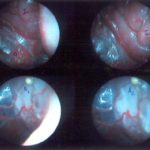
-
Falcons: The following images were obtained by endoscopy of falcons with aspergillosis.A,B An aspergilloma (A1) lying between the ovary and the cranial pole of the left kidney.B,D Aspergillus lesions (A) over a swollen liver.
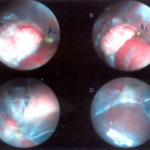
-
Pulmonary aspergillosis (Grocott) (cow 2). Serial section of the lesion previously described for cow 2 stained by Grocott. Aspergillus spp. and Actinomyces pyogenes were cultured from the lesions.
